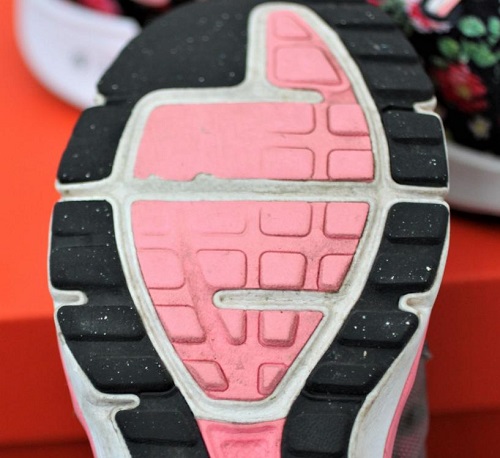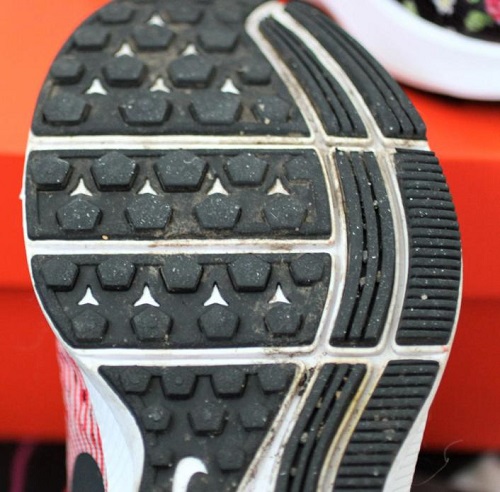Running shoes are essential for every runner, providing the support, cushioning, and protection needed to maintain performance and prevent injuries. However, knowing how to tell if running shoes are worn out is crucial for ensuring they continue to serve their purpose. Worn-out shoes can lead to discomfort, injury, and decreased performance, making it vital to recognize the signs early.When running shoes wear out, they lose their ability to cushion impact, which increases the strain on your feet and legs. This can lead to poor running form, increased fatigue, and a higher risk of injury. It’s not just about aesthetics; the internal structure of the shoe, including the midsole, can break down over time, even if the exterior still looks acceptable. Recognizing these signs will help you replace your shoes at the right time, ensuring that you continue to run safely and efficiently.This guide will help you identify the key indicators that your running shoes are past their prime and need replacement. By understanding these signs, you’ll be able to keep your runs safe and effective, avoiding the pitfalls of using worn-out footwear.

Why Is It Important to Replace Worn-Out Running Shoes?
Impact on Performance
When running shoes are worn out, their performance diminishes significantly. The cushioning and support that once made your runs smooth and comfortable begin to degrade. This loss of cushioning means that your feet absorb more shock with each step, leading to increased fatigue during your runs. As a result, you may find it harder to maintain your usual pace, and your runs might feel more challenging than before. Additionally, worn-out shoes can alter your stride, causing you to compensate for the lack of support, which can further affect your running efficiency. Over time, this can lead to decreased performance and less enjoyment during your runs. Ensuring that your shoes are in good condition is essential for maintaining peak performance and enjoying your runs to the fullest.
Risk of Injury
Worn-out running shoes pose a significant risk of injury. As the cushioning and support diminish, the shoes fail to absorb the impact of running, transferring more stress to your joints, muscles, and tendons. This increased stress can lead to overuse injuries, such as shin splints, plantar fasciitis, and knee pain. The lack of proper support can also cause your foot to move more within the shoe, leading to blisters and other discomforts. Furthermore, worn-out shoes can contribute to poor running form, which increases the likelihood of injuries over time. To reduce the risk of injury, it’s crucial to recognize the signs of wear and replace your running shoes before they become a hazard to your health and well-being.
How to Tell If Running Shoes Are Worn Out?
Visual Signs of Wear and Tear
One of the most obvious indicators that your running shoes are worn out is visible wear and tear. Look for signs like worn-down treads, frayed fabric, and holes in the upper material. The outsole, which makes direct contact with the ground, can show significant wear, particularly in high-impact areas such as the heel and forefoot. If you notice that the tread pattern is smooth or unevenly worn, it’s a clear sign that your shoes are no longer providing adequate grip and stability. Additionally, check the midsole for any signs of compression or creasing, as this indicates that the cushioning is no longer effective. Even if the upper part of the shoe looks fine, if the midsole is compromised, the shoe is likely past its prime and needs to be replaced.
Changes in Cushioning and Support
As running shoes wear out, their cushioning and support diminish, which can be felt during your runs. Pay attention to how your shoes feel underfoot. If you notice that the shoes feel flat, less responsive, or less comfortable than they used to, this could be a sign that the cushioning has broken down. The midsole, typically made of foam, loses its ability to bounce back over time, leading to a less cushioned and supportive feel. This loss of cushioning can result in your feet absorbing more impact, leading to discomfort and potential injuries. Additionally, if you find that your shoes are no longer supporting your arches or heels properly, it’s time to consider replacing them to maintain proper foot alignment and prevent injuries.
Discomfort During Runs
Discomfort during your runs is a strong indicator that your running shoes are worn out. When the cushioning and support of your shoes deteriorate, your feet and legs are forced to compensate, leading to discomfort and pain. You might experience increased soreness in your feet, ankles, or knees after runs, or you might notice new aches and pains that weren’t present before. Blisters, hotspots, and chafing are also common signs that your shoes are no longer fitting properly due to wear and tear. If your shoes are causing you pain or discomfort, it’s a clear sign that they’re no longer providing the support and protection you need. Replacing your shoes promptly can help you avoid further discomfort and keep your runs enjoyable.

How Many Miles Do Running Shoes Last?
Average Lifespan of Running Shoes
The average lifespan of running shoes is typically around 300 to 500 miles, depending on various factors such as your running style, weight, and the surfaces you run on. Lighter runners and those who primarily run on softer surfaces like grass or trails may find that their shoes last closer to 500 miles, while heavier runners or those who run on hard surfaces like concrete may need to replace their shoes closer to the 300-mile mark. It’s important to track the mileage of your shoes and be mindful of how they feel as you approach these milestones. If you notice any changes in comfort, support, or performance, it’s a good indication that your shoes have reached the end of their lifespan and should be replaced to prevent injury and maintain your running efficiency.
Factors That Influence Longevity
Several factors can influence the longevity of your running shoes. Your running style plays a significant role; runners with a heavier foot strike or those who overpronate may wear out their shoes faster due to increased pressure on specific areas. The surfaces you run on also matter—hard surfaces like asphalt and concrete can wear down the outsole and midsole more quickly than softer trails or tracks. Additionally, the frequency of your runs and the conditions you run in, such as wet or muddy environments, can accelerate wear and tear. Proper care and maintenance, such as cleaning your shoes regularly and allowing them to dry out completely between runs, can help extend their lifespan. Being aware of these factors can help you make informed decisions about when to replace your running shoes.
Conclusion
Understanding how to tell if running shoes are worn out is essential for every runner. Worn-out shoes can lead to decreased performance, discomfort, and an increased risk of injury. By recognizing the key signs of wear, such as visible damage, loss of cushioning, and discomfort during runs, you can ensure that you replace your shoes at the right time. Regularly monitoring the condition of your shoes and taking steps to extend their lifespan will help you maintain your running efficiency and enjoy safer, more comfortable runs.
FAQ:
How often should I replace my running shoes?
Running shoes should generally be replaced every 300 to 500 miles, depending on factors like your weight, running style, and the surfaces you run on. If you notice signs of wear or discomfort before reaching this mileage, it may be time to replace them sooner.
What are the risks of running in worn-out shoes?
Running in worn-out shoes increases the risk of injury, as the shoes no longer provide adequate cushioning and support. This can lead to overuse injuries such as shin splints, plantar fasciitis, and knee pain, as well as discomfort like blisters and chafing.
Can I repair my running shoes instead of replacing them?
While some minor repairs, such as replacing the insoles, can extend the life of your shoes, most running shoes should be replaced once they are worn out. The midsole and cushioning cannot be effectively repaired, and continuing to run in worn-out shoes can lead to injury.
